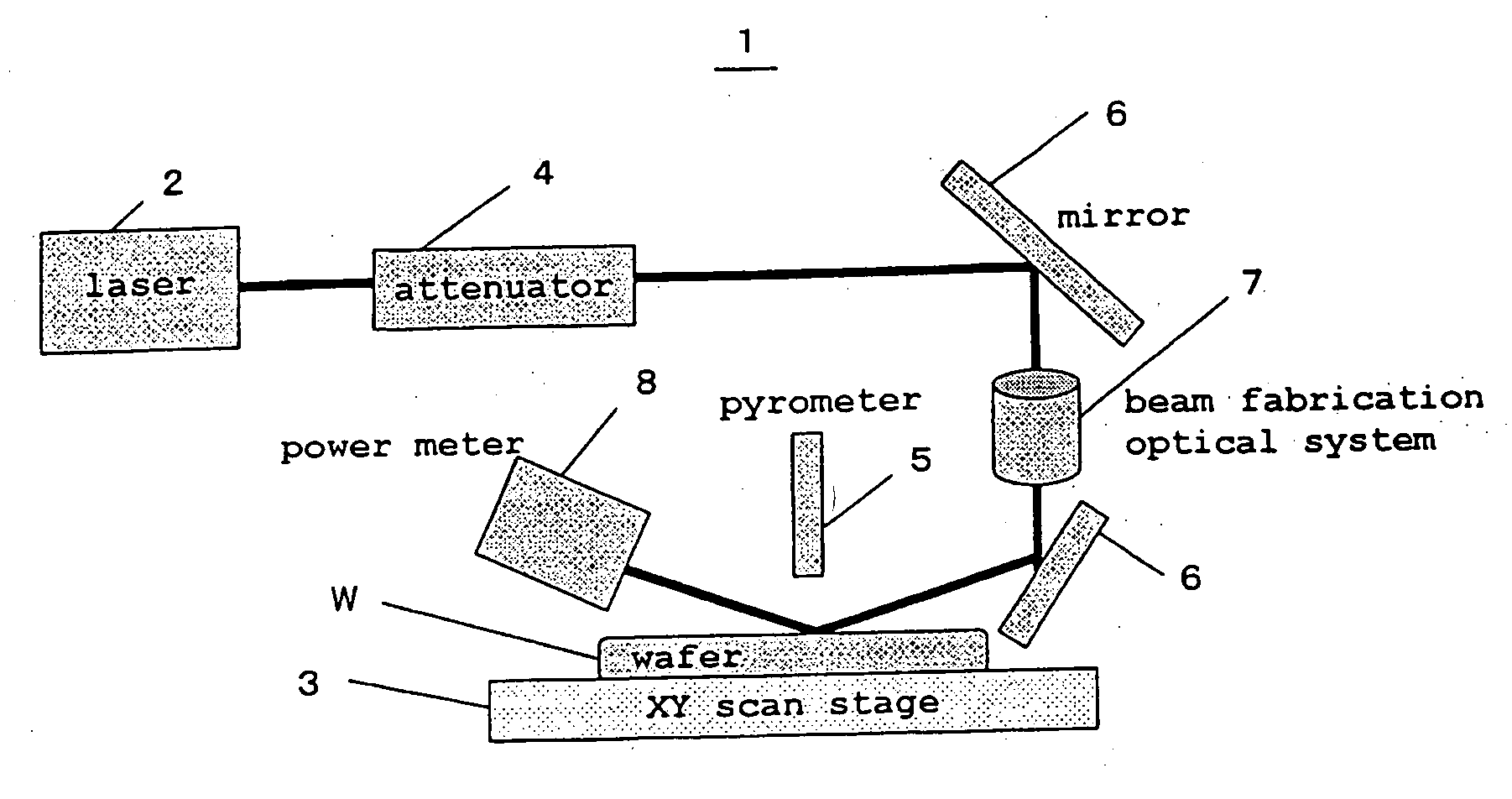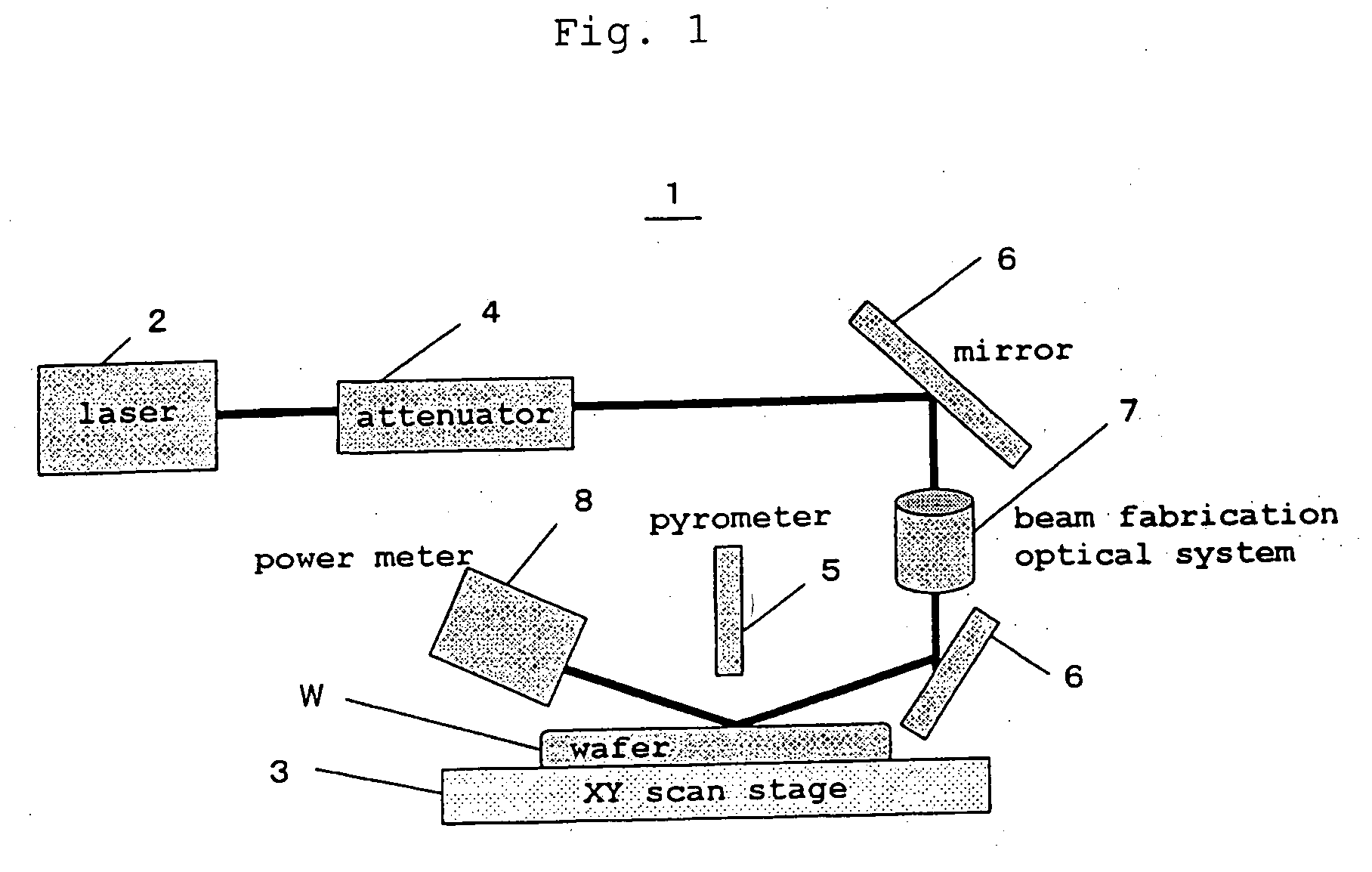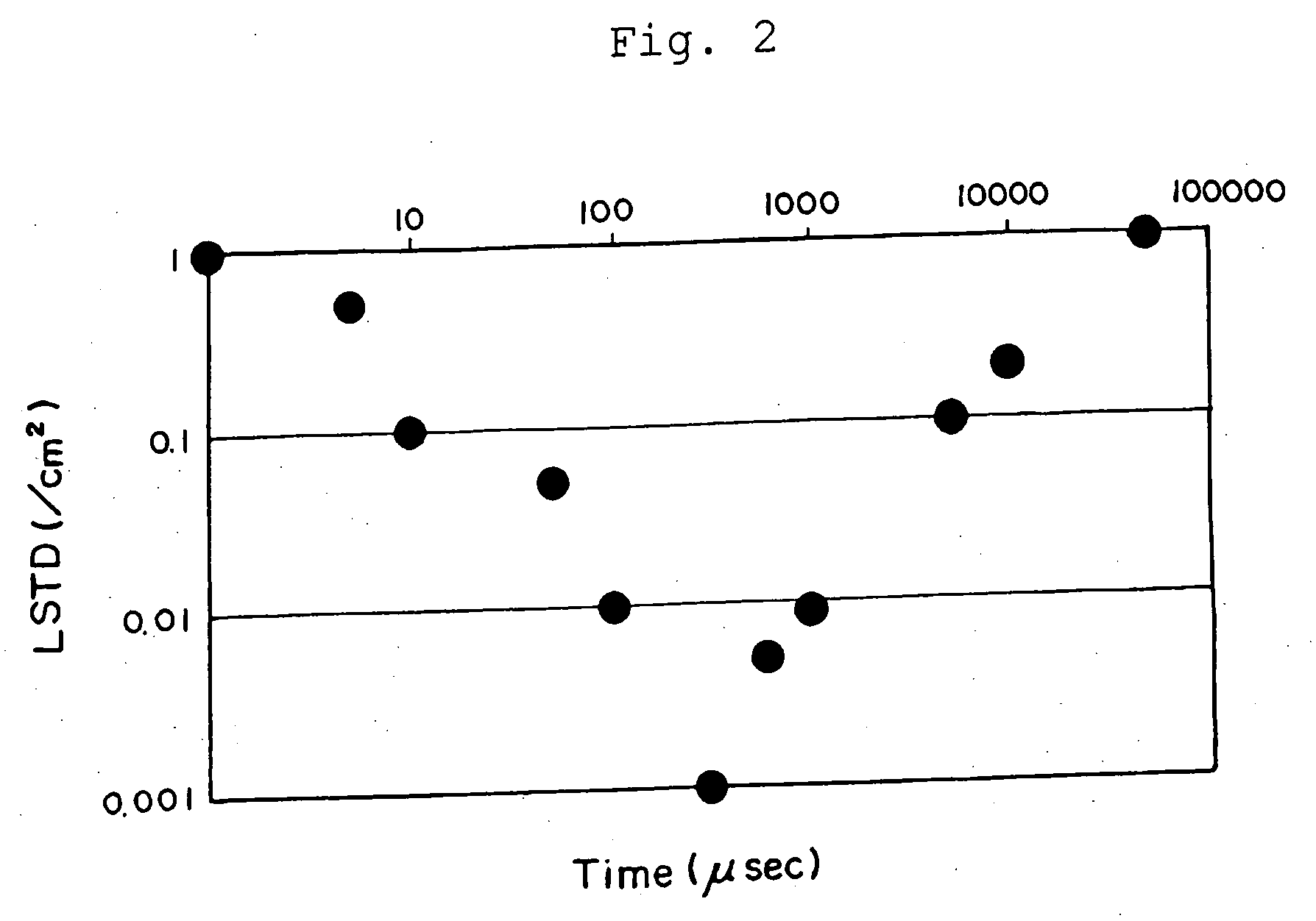Method of manufacturing silicon wafer
a manufacturing method and technology of silicon wafer, applied in the direction of crystal growth process, polycrystalline material growth, after-treatment details, etc., can solve the problems of high cost, excessive point defects, and poor productivity of wafers, so as to improve the productivity of wafer manufacturing, the effect of reducing the number of defects
- Summary
- Abstract
- Description
- Claims
- Application Information
AI Technical Summary
Benefits of technology
Problems solved by technology
Method used
Image
Examples
example 1
[0050] As a silicon (Si) wafer, one that was a substrate obtained by Czochralski method (CZ), of P-type (boron doped), having a diameter of 300 mm, a direction (100), electric resistivity of 1-10 Ωcm, and an initial oxygen concentration of 10×1017 atoms / cm3 was prepared.
[0051] Then, this substrate was subjected to LSA processing (temperature: 1300° C., period of time: 0.01 microseconds-50 milliseconds).
[0052] In addition, a diameter of an irradiation beam was 1 mm, and the entire surface of the wafer having a diameter of 300 mm was subjected to the LSA processing for about 5 minutes. The result is shown in FIG. 1. In addition, a relationship between an LSA period (microsecond) and LSTD (Laser scattering tomography defect) ( / cm2) is shown in FIG. 2.
[0053] As shown in FIG. 2, according to the present invention, LSTD may be 0.1 / cm2 or less by way of LSA processing where laser irradiation period is 10 microseconds-0.8 milliseconds.
[0054] As described above, the manufacture method of...
PUM
| Property | Measurement | Unit |
|---|---|---|
| temperature | aaaaa | aaaaa |
| temperature | aaaaa | aaaaa |
| temperature | aaaaa | aaaaa |
Abstract
Description
Claims
Application Information
 Login to View More
Login to View More - R&D
- Intellectual Property
- Life Sciences
- Materials
- Tech Scout
- Unparalleled Data Quality
- Higher Quality Content
- 60% Fewer Hallucinations
Browse by: Latest US Patents, China's latest patents, Technical Efficacy Thesaurus, Application Domain, Technology Topic, Popular Technical Reports.
© 2025 PatSnap. All rights reserved.Legal|Privacy policy|Modern Slavery Act Transparency Statement|Sitemap|About US| Contact US: help@patsnap.com



